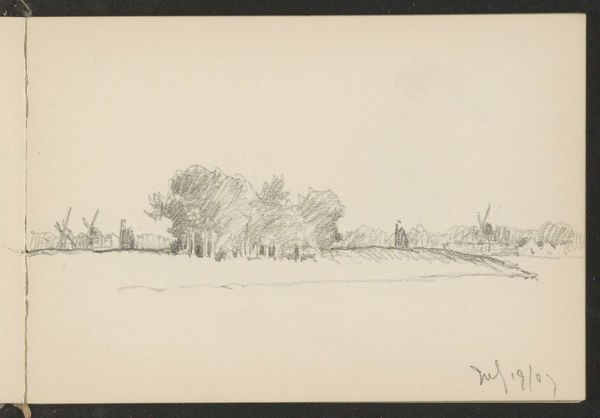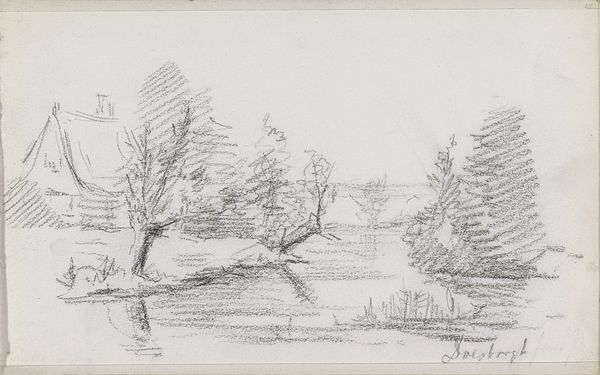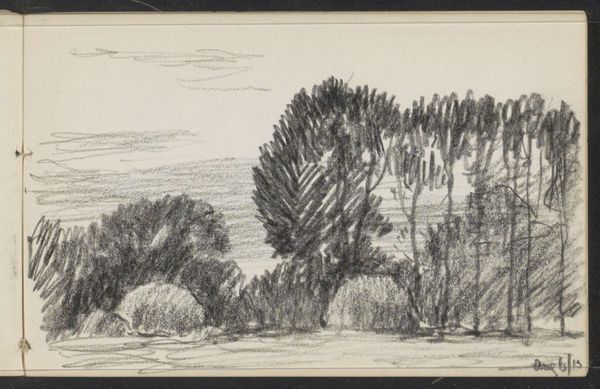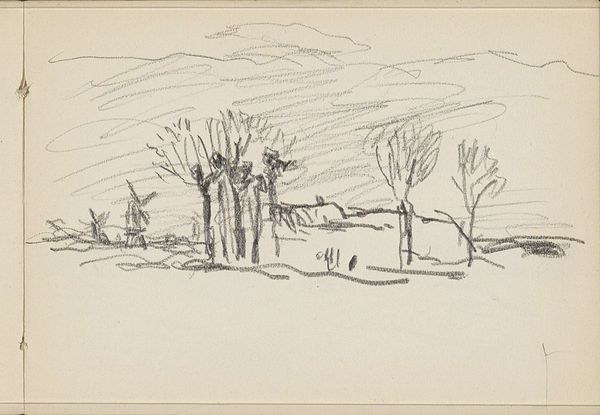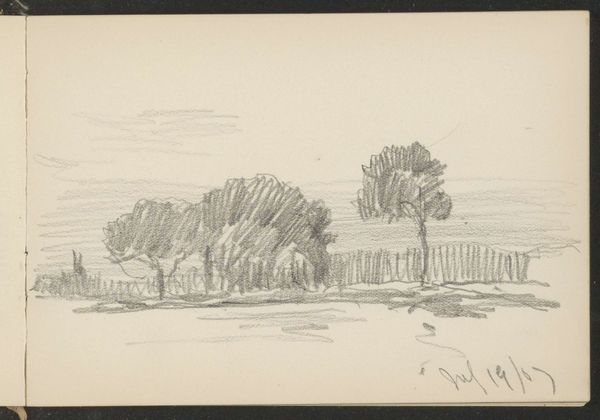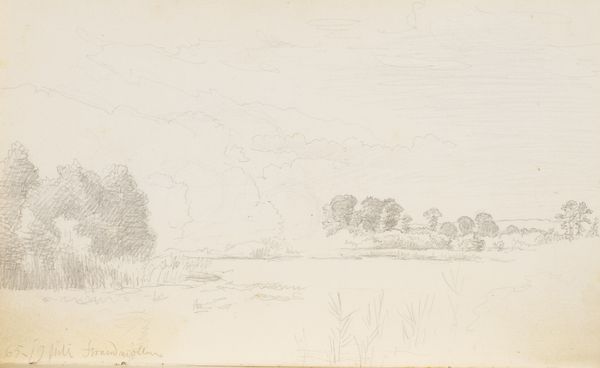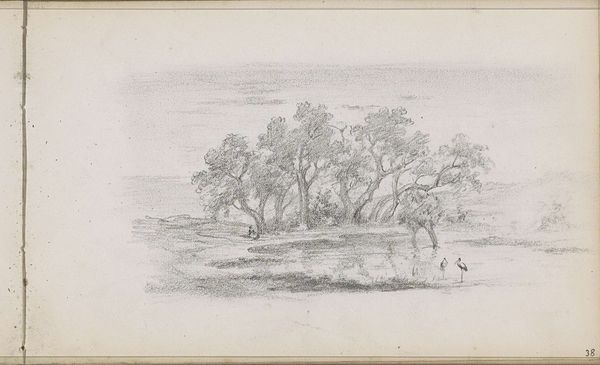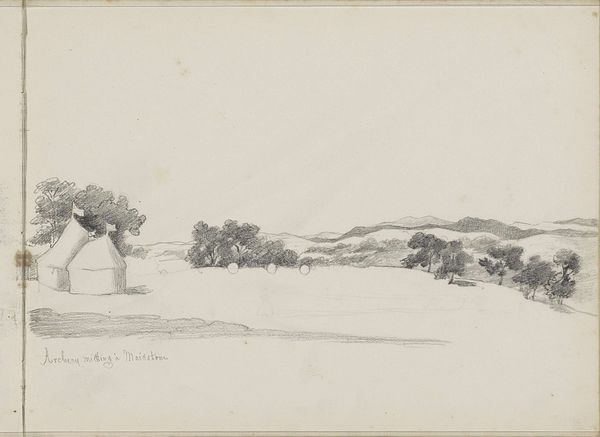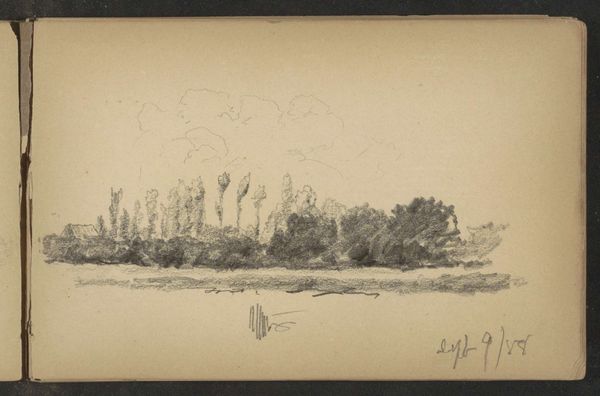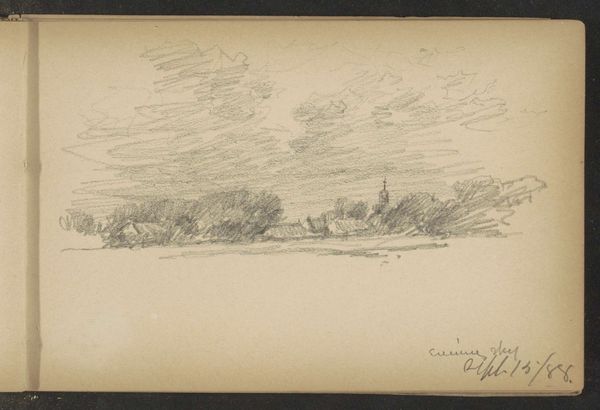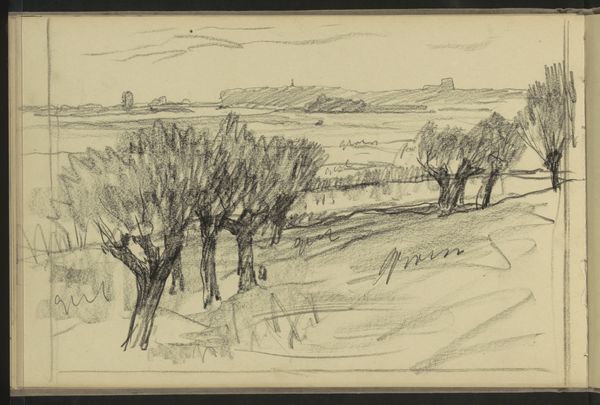
drawing, pencil
#
drawing
#
ink drawing
#
pen illustration
#
pen sketch
#
landscape
#
form
#
pencil
#
line
#
early-renaissance
#
realism
Copyright: Rijks Museum: Open Domain
Curator: This drawing, entitled "Boom in een weiland," translates to "Tree in a Meadow," dating back to 1907 and crafted by Alexander Shilling, invites a quiet contemplation. Editor: Oh, absolutely. My first thought? Bleak. But beautifully bleak, like a melancholic poem. The lone tree, that delicate line work against so much empty space... It almost feels fragile. Curator: Yes, the deliberate use of pencil and the dominance of line are so striking here. Consider, if you will, how Shilling emphasizes form over volume, directing our attention to the stark elegance of the tree itself, seemingly set adrift in an open expanse. Editor: Precisely! And that sparse use of materials highlights something crucial. The tree isn’t just a tree; it represents labour extracted, materials processed, and, importantly, access to the means of artistic production. Whose field is this? Who gets to freely roam it? Curator: An interesting tangent indeed. Looking at this sketch, I feel the loneliness and stark beauty the artist seemed keen to capture. There is no real interaction happening, so it really captures the tree, as this lonely point that just exists by itself. Editor: It also shows that labor and artistry are not opposed! Shilling probably had a particular pencil type, from a factory. His vision is intertwined with those industrial processes whether he fully recognizes it or not. Art supplies aren’t naturally occurring. Curator: Very true! It seems he did a number of sketches with that signature. Perhaps this type of nature documentation was something common for him. Maybe part of a routine in recording rural England as industrialization crept on? Editor: That could be! This image just speaks of what is necessary in the context, not so much what's there. I was stuck thinking only about what's actually making the drawing at all and had forgotten to notice anything in the sketch. Curator: Yes. Shilling's humble sketch of a tree in a field becomes a poignant symbol of beauty, labor, production and material and immaterial constraints that might not otherwise present themselves. Editor: And who benefits and pays for all of that labour which informs even our access to what appears, on the surface, to be beauty? I hope Alexander Shilling would understand all we’re discussing about that.
Comments
No comments
Be the first to comment and join the conversation on the ultimate creative platform.
